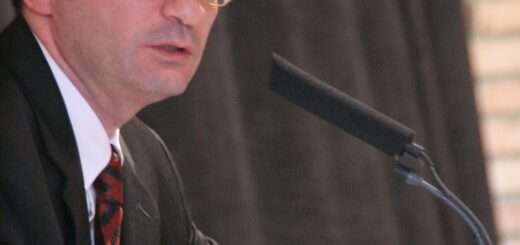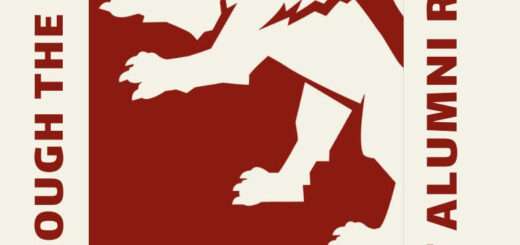When the Violin Speaks Armenian: A New Chapter in Music Education Unfolds in Armenia

YEREVAN /ARKA/ — When the violin speaks Armenian, it gives rise to more than mere music – it brings forth the history, memory, and pride of a nation. The names of Sergey Khachatryan, Diana Adamyan, and Hayk Kazazyan echo on the world’s premier stages, while the violin concertos of Aram Khachaturian and Tigran Mansuryan are cherished by music enthusiasts. Elena Yakovleva, Director of the Primavera Foundation, shares insights with Novosti-Armenia news agency regarding the inception of the idea to translate Carl Flesch’s renowned violin textbook and the significance of culture as a strategic investment for the future.
Novosti Armenia – The Primavera Foundation, in collaboration with Novosti-Armenia news agency, is initiating a distinctive project focused on globally acclaimed Armenian violinists, alongside an unprecedented event – the translation of a legendary violin textbook into Armenian. How did this concept emerge? What held greater significance—music, culture, or the history of the people resonating through each note?
Elena Yakovleva. A specialized textbook benefits generations. In this instance, the primary beneficiaries will be all Armenian-speaking educators and musicians—that’s what matters most to me. The necessity for translation became evident during master classes conducted by German violinist Maximilian Simon—our violin program curator and the project’s originator—at the Gyumri branch of the Yerevan State Conservatory. Following the classes, we convened with the teachers to discuss the textbooks used by young Armenian violinists. By that time, Maximilian had already co-edited the updated German edition of Carl Flesch’s iconic textbook, ‘The Art of Violin Playing,’ which is recognized in conservatories worldwide. The book had been released in Germany shortly before our visit. We engaged in negotiations with Ries & Erler, and the foundation successfully obtained a license to translate ‘The Art of Violin Playing’ into Armenian and publish it in Armenia with an initial print run of 500 copies.
Novosti Armenia – The creation of this textbook was made feasible through the contributions of philanthropists Apricot Capital, Balchug Capital, and The Amaryan Foundation. What opportunities does this create for educators and students in Armenia?
Elena Yakovleva-. Investing in the publication of textbooks is a fundamentally strategic decision. It necessitates long-term planning, a systemic perspective, and an understanding of the factors that affect the quality of life for both individuals and society. However, it is crucial to recognize that this is an extremely labor-intensive and expensive endeavor. How many professionals do you believe are required to publish a single textbook? Allow me to explain. Firstly, a translator is needed who possesses knowledge of Armenian, fluency in the source language (either German or English), and expertise in violin instruction. After three months of searching across multiple countries, Aram Badalyan, a professor at the Hochschule für Musik in Detmold, accepted this monumental challenge.
Secondly, there is the task of working on terminology. The Armenian violin school has its roots in Soviet Leningrad, dating back 100 years. It is vital to merge international terminology with practical teaching methods in Armenia, especially since the universal language of music is Italian. Professor Armen Harutyunyan from the Komitas Yerevan Conservatory acted as the academic editor for this publication. Thirdly, the professional precision of the text was guaranteed by Nona Voskanyan, a musicologist affiliated with the Yerevan Conservatory.
In total, three specialists, proficient in four languages and committed to their profession for many years, were involved. Additionally, nearly 800 musical notations were accurately verified by Mari Minasyan, a staff member at the Conservatory. This count does not include the project manager, designer, and publisher.
Novosti Armenia- Sergey Khachatryan, Jean Ter-Merguerian, Diana Adamyan, Nune Melikyan, and Hayk Kazazyan—these names evoke a vibrant universe within the heart. They serve as Armenia’s ambassadors to the world, allowing Stradivari and Amati violins to resonate with an Armenian essence. How can one elucidate this phenomenon?
Elena Yakovleva- Although I am not a musician, I have collaborated with esteemed contemporary classical artists. The experts from the foundation—professional musicians—and I journeyed from Meghri to Noyemberyan. They consistently comment on the inherent musicality and sensitivity of Armenian musicians, alongside their diligence and resolve. The phenomenon surrounding Armenian violinists (and successful Armenians globally) stems from this very combination. It is a blend of years of dedicated effort, grounded in textbooks, methodologies, and instructors who impart their knowledge from one generation to the next.
Novosti Armenia- Currently, discussions revolve around the concept of “patronage of the arts at a new level.” Has this evolved from mere charity to a form of luxury patronage?
Elena Yakovleva- International research indicates that between 90 to 100% of affluent individuals engage in philanthropy, though not all establish family or corporate foundations. The critical inquiry lies in the allocation and direction of these funds. Recognizing that culture and music serve as avenues for rendering a country recognizable and appealing to the global community necessitates a unique viewpoint. The capacity to perceive both the distant and the immediate—that is art, yet viewed through a commercial lens. Who have historically been the patrons of the arts? Industrialists, diplomats, aristocrats, and members of royal families—individuals who have achieved success in their respective domains. It is unsurprising that music education remains an integral component of children’s “general development” curricula. There exist numerous avenues to shape history. Crafting history through the medium of culture is a splendid approach, accessible to anyone who appreciates its significance.
Novosti Armenia- Is a philanthropist in the 21st century someone who supports the arts merely for the sake of enhancing their image, or do they genuinely feel a sense of responsibility towards the future of culture?
Elena Yakovleva- A philanthropist is an individual who acknowledges his responsibilities towards himself, his family, his business, society, and his nation, and who leads a life characterized by openness, particularly in an intellectual sense. The motivations behind his actions can vary, ranging from personal experiences to the necessity of filling the gaps left by state institutions in specific areas. In my experience, I have seldom encountered philanthropists who engage in charitable acts solely for the sake of appearances; rather, they tend to keep certain information private.
Novosti Armenia- You provide young musicians with opportunities to nurture their talents. Is the Primavera Foundation serving as a conduit between the Armenian educational system and the international stage?
Elena Yakovleva- It would be excessively ambitious to claim “that is us.” Such challenges are addressed by educators, as they require years of systematic study. It is inappropriate to conduct sporadic master classes while appropriating the decades of effort put forth by teachers on a daily basis. What actions can we take? We can offer information, promote a mindful approach to career development, facilitate connections for consultations, and provide expert recommendations for repertoire. Alternatively, we could make a textbook readily available. Thanks to the generosity of the project’s donors—Apricot Capital, Balchug Capital, and the Amaryan Foundation—Carl Flesch’s “The Art of Violin Playing” will be accessible at no cost to Armenian educators. Applications can be submitted through the foundation’s website.
Novosti Armenia- If one were to encapsulate Armenian violin playing in a single emotion, what would it be?
Elena Yakovleva- A deep respect for the teachers, pride in the performers, and ultimately, joy.





